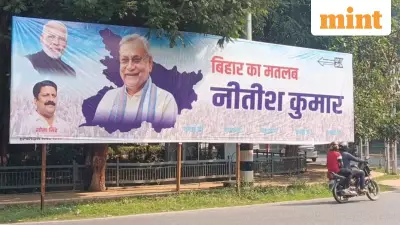
Mexico City witnessed violent clashes on Saturday as a massive protest against President Claudia Sheinbaum's handling of violent crime turned chaotic, leaving more than 100 people injured and leading to 20 detentions.
Protest Descends Into Chaos
Thousands of demonstrators marched through Mexico City's historic Zócalo square in a powerful display of public anger against the government's security policies. The protest drew support from diverse groups, including young Mexicans connected to global Generation Z protest movements and supporters of the domestic "Sombrero Movement."
The situation escalated when several agitators, some wearing balaclavas to conceal their identities, pulled down metal barriers protecting the National Palace where President Sheinbaum resides and works. Protesters hurled cobblestones at public order police, who responded with tear gas to disperse the crowd.
Casualties and Arrests
According to Pablo Vázquez, Mexico City's security chief, the violent clashes resulted in significant injuries on both sides. Twenty protesters and 100 police personnel were injured, with 40 officers requiring hospitalization for cuts and bruises sustained during the confrontation.
Vázquez told reporters that while the mobilization proceeded peacefully for many hours, the situation changed when "a group of hooded individuals began to commit acts of violence." Police detained 20 individuals on charges of theft and assault following the clashes.
Political Backlash and Criticism
The protest comes amid growing criticism of President Sheinbaum's security policies, despite her maintaining approval ratings above 70% during her first year in office since taking power in October 2024. Several high-profile murders have intensified public scrutiny of her government's approach to organized crime.
Valentina Ramirez, a student participant, expressed the frustration felt by many protesters, telling AFP: "This is one of the most corrupt governments we've ever had. It's a corrupt narco-government that wants to defend the corrupt and the cartels instead of the people."
The demonstration featured symbolic elements connecting it to recent tragedies. Many protesters wore sombreros similar to those made famous by Carlos Manzo, a mayor from western Michoacán state who was assassinated on November 1. Manzo had been known for his crusade against drug-trafficking gangs in his hometown of Uruapan.
However, the assassinated mayor's widow has distanced her husband's movement from Saturday's demonstration, creating complexity around the protest's leadership and messaging.
Global Protest Symbols Emerge
Demonstrators displayed banners bearing messages such as "We are all Carlos Manzo," alongside the iconic pirate flag from the Japanese manga One Piece. This flag has become a widely recognized symbol of youth protest movements worldwide, appearing in demonstrations from Madagascar and the Philippines to Peru.
The protest followed another high-profile killing - the shooting death of Bernardo Bravo, a leader of lime producers in the same region, in late October. These incidents have fueled public anger about the government's inability to control violent crime.
Earlier in the week, President Sheinbaum had questioned the motivations behind the demonstration, stating at her regular morning press conference that the protest was "inorganic" and "paid for," suggesting external influences rather than genuine public sentiment.
Authorities have also launched an investigation into the assault of a journalist from La Jornada newspaper, with allegations that police officers were responsible for the incident, adding another layer of controversy to the already tense situation.





